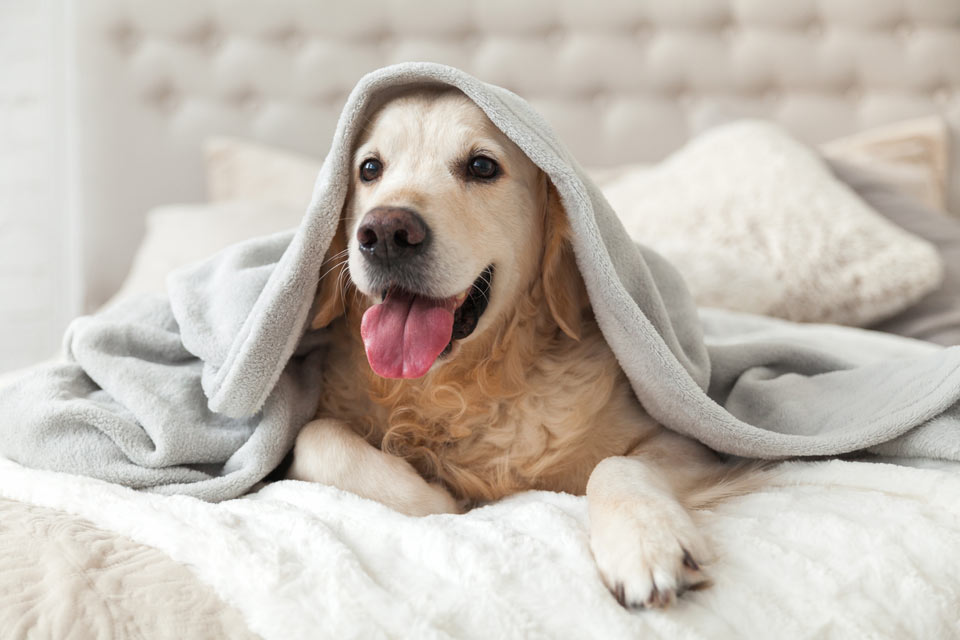Decreasing Dust Mites for Your Allergic Dog

Dust mites are microscopic bugs that every home hosts. They eat skin and dander that come off humans and pets. They especially love to hang out in bedding and sleeping areas and carpeting and are more plentiful in high humidity homes.
Are Dust Mites Bad for Dogs?
Dust mites are only a bad thing for dogs to be around if the dog is allergic to them. In that case, being exposed to dust mites can cause atopic dermatitis, which is itchy skin. Dogs may scratch incessantly, lose hair, and develop secondary skin infections.
House dust mites cause atopy that's consistent all year round because the dog is exposed to mites all year.
A veterinarian can diagnose house dust mite allergy by ruling out other causes of allergies, such as food allergy, by doing a food trial. Allergy testing may isolate dust mite allergy.
How to Decrease Your Dog's Exposure to Dust Mites
Here are some ways to decrease dust mites in your home:
- Keep your dog out of your bed, if possible. That's because dust mites will be plentiful in your mattress. If your dog absolutely must be in your bed, try a plastic mattress cover and wash your sheets and pillowcases once a week.
- Feather pillows hold more dust mites than other types of pillows, so don't let your allergic dog near feather pillows.
- Similarly, your pet's bed can be covered in plastic under a cover and should be washed every week. Replace your dog's beds twice a year. Similarly, wash your dog's stuffed toys weekly and get rid of them periodically. Stick to washable toys.
- As much as possible, use hard surfaces in your home. Use wood and plastic instead of carpet, upholstery, and blankets.
- Vacuum and dust your home often, with a vacuum with a HEPA filter, keeping your dog out of the immediate area while you're doing so.
- Keep the humidity as low as possible in your home.
Additionally, follow your veterinarian's recommendations for treating your dog and decreasing itchiness and secondary skin infections.
Learn more about atopy here: "Atopy: Inhalant Allergies in Dogs."
You May Also Like These Articles:
Atopy: Inhalant Allergies in Dogs
Dealing With Canine Scratching and Licking
Disclaimer: This website is not intended to replace professional consultation, diagnosis, or treatment by a licensed veterinarian. If you require any veterinary related advice, contact your veterinarian promptly. Information at DogHealth.com is exclusively of a general reference nature. Do not disregard veterinary advice or delay treatment as a result of accessing information at this site. Just Answer is an external service not affiliated with DogHealth.com.
Notice: Ask-a-Vet is an affiliated service for those who wish to speak with a veterinary professional about their pet's specific condition. Initially, a bot will ask questions to determine the general nature of your concern. Then, you will be transferred to a human. There is a charge for the service if you choose to connect to a veterinarian. Ask-a-Vet is not manned by the staff or owners of DogHealth.com, and the advice given should not delay or replace a visit to your veterinarian.



